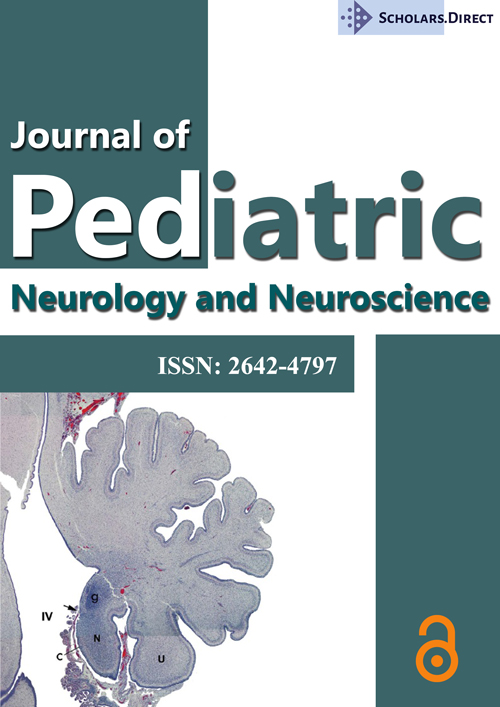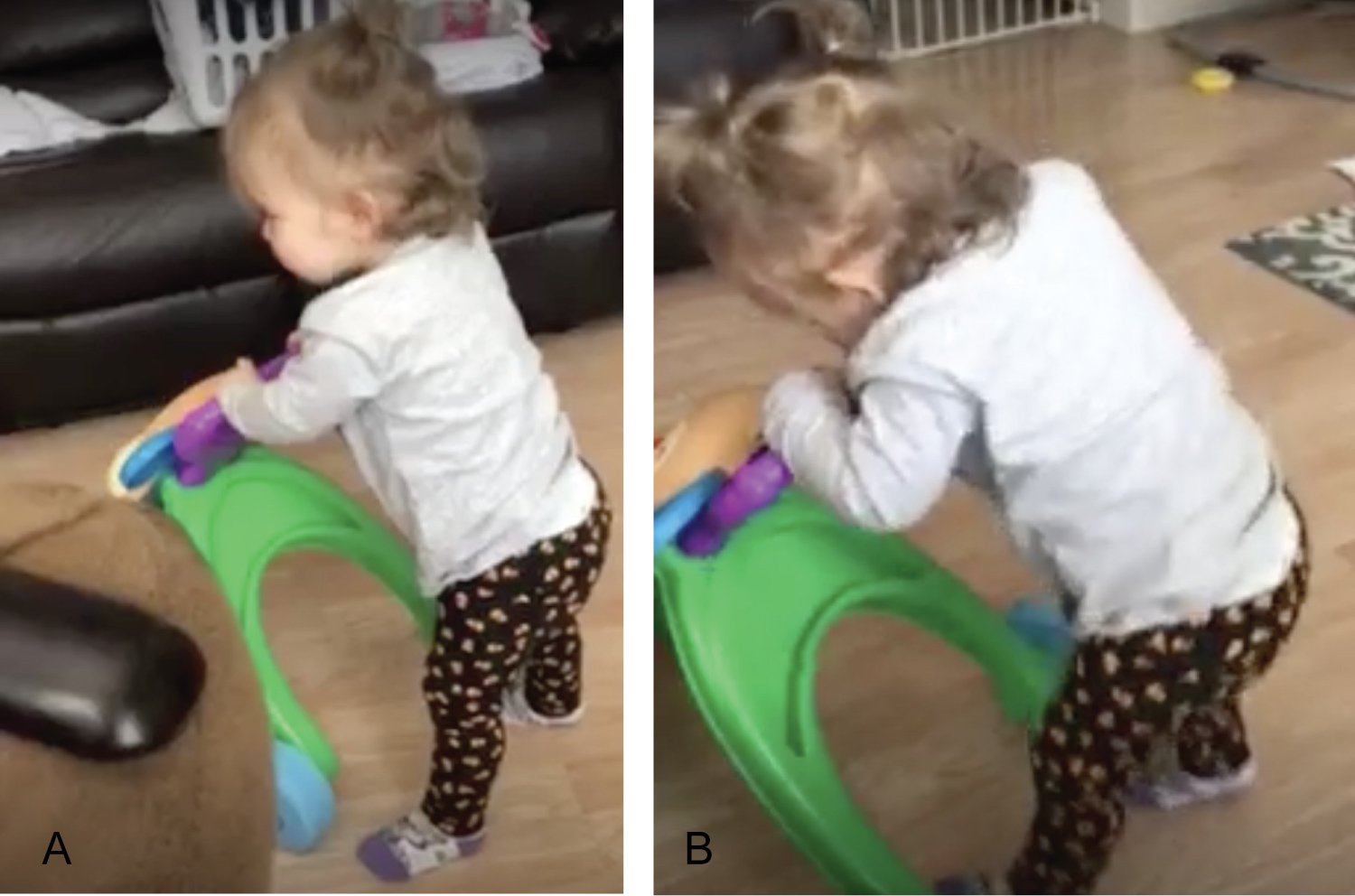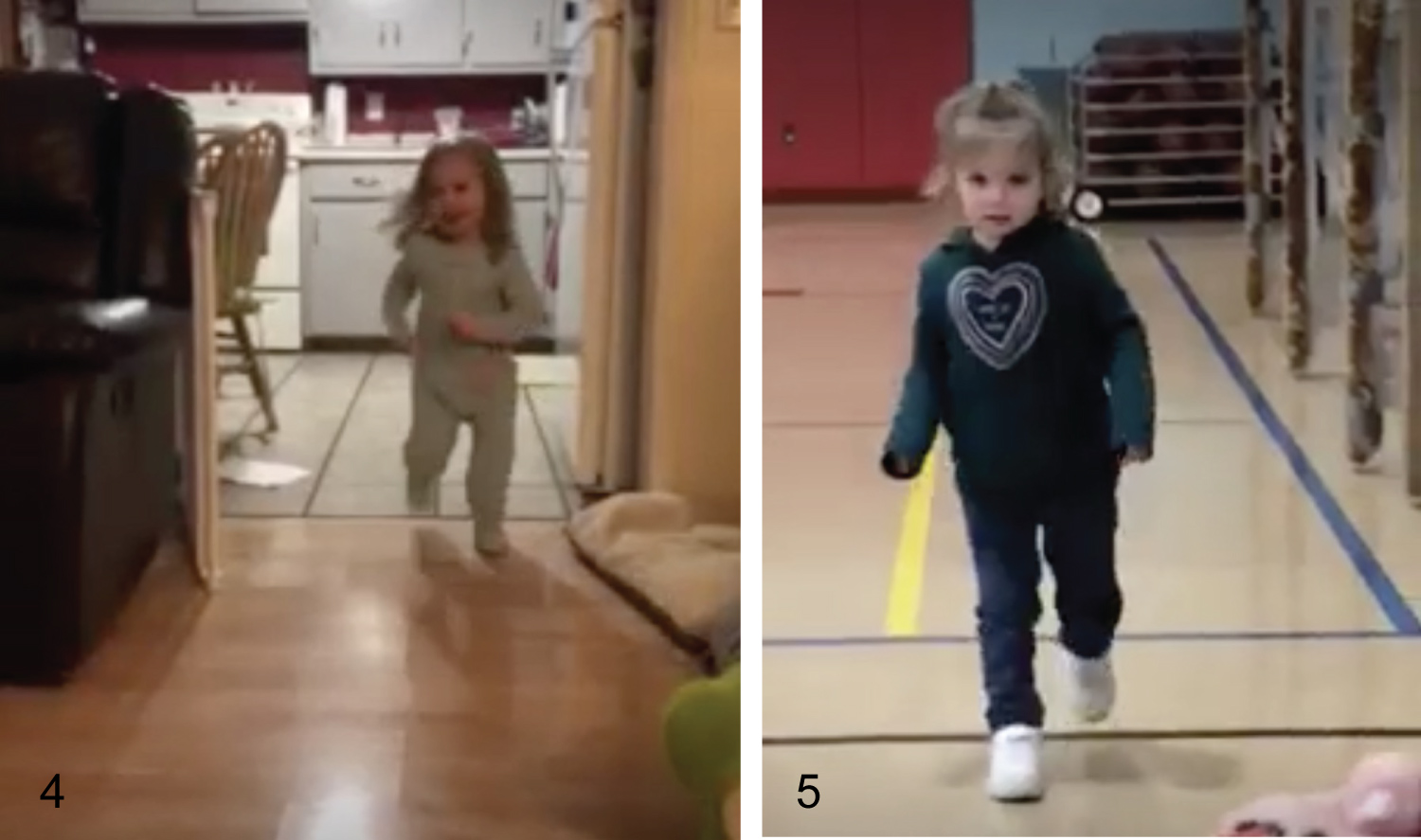Treatment of Bi-Allelic PRRT-2 Mutation Associated Ataxia and Paroxysmal Dyskinesia
Abstract
PRRT2 is located on chromosome 16p11.2 and is a transmembrane protein highly expressed in the CNS that has been identified to play a role in epilepsy, movement disorders and hemiplegic migraines. Specifically, variants are identified in families with paroxysmal kinesigenic dyskinesia. Here, we present a patient with a biallelic mutation in PRRT2 leading to a more severe form of the condition who presented with epilepsy, episodic ataxia and dyskinesia in childhood. We demonstrate how oxcarbazepine can reduce the symptoms and allow the child to live without these movement disorders.
Keywords
PRRT2, Paroxysmal kinesigenic dyskinesia, Oxcarbazepine
Case Presentation
A female infant who was born at 34 weeks gestation was first noted to have seizures at 4 months of age. Epilepsy resolved by 6 months of age with phenytoin and levetiracetam treatment which was then transitioned to topiramate. Her seizures were described as generalized tonic-clonic activity that lasted up to 3 minutes.
At 22 months of age, the patient presented with episodic ataxia and episodic dyskinesia. The ataxia was characterized as a loss of balance after waking up in the morning and lasting for 2-3 weeks along with episodes of emesis. She had a broad-based stance when attempting to walk using support (Figure 1). On the other hand, the dyskinesia episodes were 5-15 minutes and occurred several times throughout the day. Her paroxysms consisted of facial spasms and involuntary tongue movements (Figure 2). The orobuccal movements were at times accompanied with dyskinetic movements of the left arm (Figure 3). These movements occurred at rest and also when the patient was engaged with playing or eating. A genetic panel revealed biallelic variants in PRRT2. Although topiramate did not discontinue the episodes, the addition of oxcarbazepine was beneficial. Use of oxcarbazepine alleviated the dyskinesia symptoms; however, the patient was at first vomiting the medication and was given ondansetron to combat this. After receiving oxcarbazepine, the balance impairment was no longer present and she was able to walk and run without support. Moreover, the dyskinetic facial and arm movements had ceased as well (Figure 4 and Figure 5). She is able to live as a healthy child without the paroxysms of ataxia and dyskinesia.
Discussion
PRRT-2 is a transmembrane protein that interacts with SNAP25 and plays a role in exocytosis in neurons [1]. It is primarily expressed in the cerebral cortex, hippocampus, basal ganglia, and cerebellum [2]. Mutations in the PRRT-2 gene are to be shown to present with paroxysmal movement disorders including paroxysmal dyskinesia and episodic ataxia which primarily begin in childhood and adolescence [3]. Episodic ataxia usually lasts from a few seconds to several days and also presents with vertigo, nausea, tremor, or headache. In contrast, paroxysmal kinesigenic dyskinesia lasts a few seconds to a minute is described as dystonia with no change in consciousness [4]. Paroxysmal kinesigenic dyskinesia consists of dystonia, chorea and ballism and is found to be triggered by sudden movements [2]. Upon imaging, the MRI shows no abnormalities and furthermore, there are no morphological changes in autopsy results [4].
Bi-allelic mutations of PRRT2 are associated with more severe disease presentation along with a longer duration of episodes. Moreover, the standard treatment of low-dose anti- seizure medication that are used for paroxysmal kinesigenic dyskinesia may not work because patients with the homozygous mutation have treatment resistance [2,5]. One specific patient with bi-allelic variation in PRRT-2 presented with several episodes of myoclonus and episodic ataxia after minor head trauma. She also had focal cortical dysplasia in the parietal lobe on MRI [6]. Here, we present a case of a patient with bi-allelic pathogenic variants in PRRT2 and demonstrate how her dyskinesia and ataxia improved after treatment with oxcarbazepine.
References
- Labate A, Tarantino P, Palamara G, et al. (2013) Mutations in PRRT2 result in familial infantile seizures with heterogeneous phenotypes including febrile convulsions and probable SUDEP. Epilepsy Res 104: 280-284.
- Manso-Calderón R (2019) The spectrum of paroxysmal dyskinesias. Future Neurology 14.
- Méneret A, Roze E (2016) Paroxysmal movement disorders: An update. Rev Neurol (Paris) 172: 433-445.
- Méneret A, Gaudebout C, Riant F, et al. (2013) PRRT2 mutations and paroxysmal disorders. Eur J Neurol 20: 872-878.
- Zhang X-J, ZX, Xu Z-Y, Wu Y, et al. (2019) Paroxysmal movement disorders: Recent advances and proposal of a classification system. Parkinsonism Relat Disord 59: 131-139.
- Döring JH, Saffari A, Bast T, et al. (2020) The phenotypic spectrum of PRRT2-associated paroxysmal neurologic disorders in childhood. Biomedicines 8: 1-14.
Corresponding Author
Naini Shiswawala, BA, Case Western Reserve University School of Medicine, USA
Copyright
© 2022 Shiswawala N, et al. This is an open-access article distributed under the terms of the Creative Commons Attribution License, which permits unrestricted use, distribution, and reproduction in any medium, provided the original author and source are credited.








